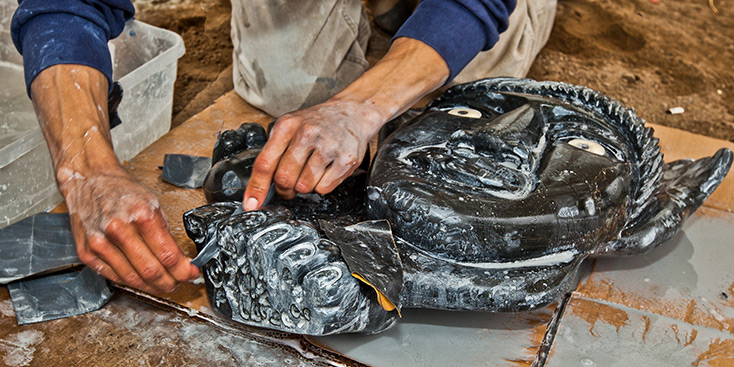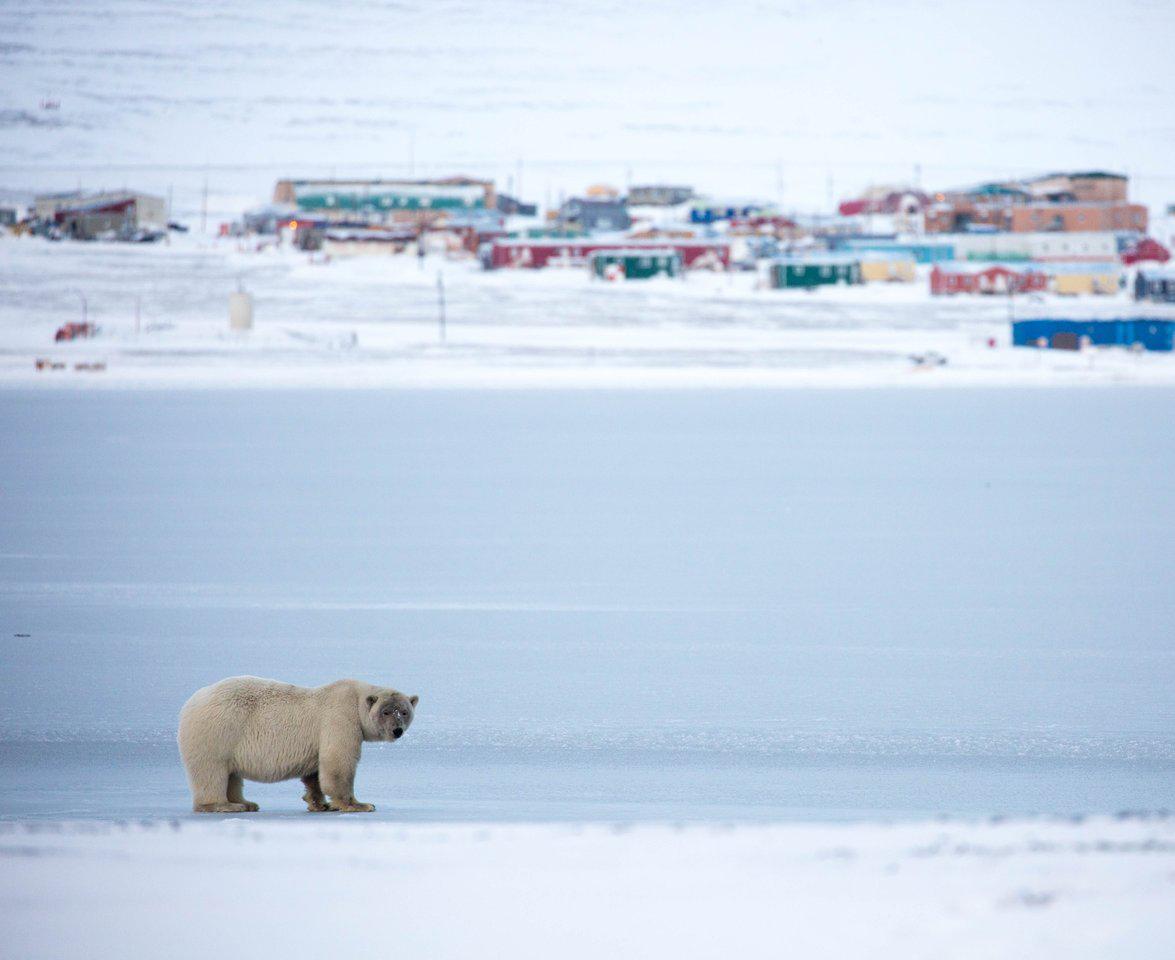Chesterfield Inlet is located on the northwestern coast of Hudson Bay, about 100 kilometres (62 miles) north of Rankin Inlet.
In Inuktitut, this place is called ‘Igluligaarjuk’ which means ‘place with few houses’ because there once was an ancient Thule community that camped here each summer. There were 700 people living here when European and American whalers first arrived and began using the place as a safe winter harbour for their vessels.
Each year Inuit people travel to this area and to other special places to hunt caribou and fish char. Chesterfield Inlet is a great destination for whale watching and bird watching, with three nearby islands that are nesting grounds for waterfowl. The local Inuit women are well known for their arts and crafts and the local Inuit men are famous for their seafaring skills.
400
90% Inuit
Inuktitut, English
Longitude 95° 45’ W
Latitude 63° 30’ N
Elevation 11m
The local terrain is typical Hudson Bay lowland, with flat expanses of tundra, numerous small rivers and lakes, plus patches of exposed bedrock and coastal gravel deposits.
Weather & Climate
It gets foggy and rainy in September. Usually it begins to snow in October. Winter temperatures range from -28°C to -35°C. Moderate to strong winds are common. With the winter wind chill, it can feel like -50°C. The shortest days of December have about four hours of sunlight. March and April are the stormy months when blizzards can happen, but the days grow steadily longer then, warmer and brighter each day into June.
| Average Temperature in Chesterfield Inlet | |||
|---|---|---|---|
| January | -31oC | February | -31oC |
| March | -27oC | April | -17oC |
| May | -6oC | June | 3oC |
| July | 9oC | August | 8oC |
| September | 2oC | October | -8oC |
| November | -19oC | December | -26oC |
HISTORY
The ancient Dorset people, followed by the Thule people (the direct ancestors of the Inuit) lived in this region from 500 BC to 1600 AD. They returned each summer to hunt and fish. There was no contact with Europeans for many centuries.
- Dorset Culture (‘Tuniit’ or ‘Sivullirmiut’): 500 BC to 1500 AD
- Thule Culture (Proto-Inuit): 1000 AD to 1600 AD
- Inuit Culture (Eskimo): 1600 AD to present-day
The English name for this inlet and its community comes from the mid-1700s when British explorers charted the area while seeking the Northwest Passage. It was named after the British statesman Lord Philip Dormer Stanhope, the fourth Earl of Chesterfield, who was Secretary of State for England from 1746-1748.
Throughout the 1800s, to the beginning of the 20th century, European and American whalers visited the western Hudson Bay area regularly and often wintered at Chesterfield Inlet. They relied on the local Inuit to track bowhead and work on the whaleboats. Inuit people from across Kivalliq soon gathered at Chesterfield Inlet to seek whaling employment and trade furs for supplies.
Until the 1950s it was the most populated community north of Churchill, Manitoba, serving as the Hudson Bay Company’s main supply depot for all the HBC trading posts in the area. With the biggest detachment of Royal Canadian Mounted Police and the largest Catholic mission, it soon became the commercial, medical and educational centre of the region.
In 1957, a nickel-copper mine opened at nearby Rankin Inlet and many Inuit men moved from Chesterfield Inlet to work underground there. When the mine closed down in 1962, some of these men returned to Chesterfield Inlet, but by the early 1970s Rankin Inlet had become the new regional centre of Kivalliq.
ACTIVITIES AND WILDLIFE
You can tour ancient archaeological sites, go whale watching, bird watching, fish for arctic char and lake trout, hunt caribou and view polar bears in their natural surroundings while experiencing the culture and warm hospitality of the local Inuit.
Beluga whales thrive here, as do seals and walruses, arctic foxes, lemmings and arctic hares. Explore the area on cross-country skis, by dog sled or snowmobile excursion in the winter and go boating, hiking or by ATV in the summer.
Expert local guides will escort you to the best locations for camping, hunting, fishing and sightseeing.

ARTS AND CULTURE
Chesterfield Inlet arts and crafts include beautifully handmade articles of Inuit clothing such as amautiit, crocheted hats and fur mitts, plus wall hangings, dolls, jewellery, soapstone and ivory carvings.
Parks
Iqalugaarjuup Nunanga Territorial Park
This historic park is located 90 kilometres (56 miles) south of Chesterfield Inlet. It was created to preserve several important archaeological sites and to conserve the habitat of loons, ducks, geese, cranes, voles, lemmings, hares, foxes, wolves, caribou, barren land grizzly and polar bears.
It remains a camping and fishing paradise from ancient times.
The Medialine River cliff area is called ‘Ijiraliq’ in Inuktitut, from Inuit legend, referring to the name of someone who turns into a whistling spirit, like a caribou.
The archaeological section of the park has numerous artifacts of the Pre-Dorset people dating from 1000 BC, plus tent rings, graves and food cache sites of the Thule people dated to 1200 AD.
PARKS
Mallikjuaq Territorial Park
Mallikjuaq means ‘big wave’ in Inuktitut, an appropriate name for an island where rounded rock hills and low tundra valleys resemble giant rolling waves. While magical Mallikjuaq Territorial Park gets its name from its gentle topography, its mystical spirit comes from its eternal wildlife and ancient human history. Located a mere forty-five minute walk from Cape Dorset, here in this park you will find a host of ancient Dorset archaeological sites, with stone structures dating back three millennia.

